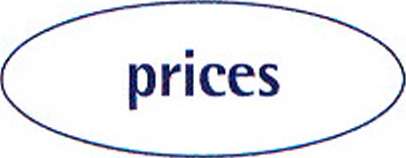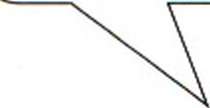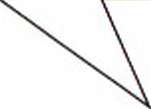
CATEGORIES:
BiologyChemistryConstructionCultureEcologyEconomyElectronicsFinanceGeographyHistoryInformaticsLawMathematicsMechanicsMedicineOtherPedagogyPhilosophyPhysicsPolicyPsychologySociologySportTourism
Cost accounting
Direct arid indirect costs
BrE: overheads; AmE: overhead
Cost accounting involves calculating the costs of different products or services, so that company managers can know what price to charge for particular products and services and which are the most profitable. Direct costs - those that can be directly related to the production of particular units of a product - are quite easy to calculate. Examples include manufacturing materials and manufacturing wages. But there are also indirect costs or overheads - costs and expenses that cannot be identified with particular manufacturing processes or units of production. Examples include rent or property taxes for the company's offices and factories, electricity for lighting and heating, the maintenance department, the factory canteen or restaurant, managers' salaries, and so on. Costs such as these are often grouped together on the profit and loss account or income statement as Selling, General and Administrative Expenses.
Fixed and variable costs
Companies also differentiate between fixed costs and variable costs. Fixed costs are those that do not change in the short term, even if the production level changes, such as rent and interest payments. Variable costs are those that change in proportion to the volume of production, such as components and raw materials, and overtime payments.
Manufacturing companies have to find a way of allocating fixed and variable costs to the various products they make: that is, they divide up the costs and charge them to the different products. Absorption costing attempts to charge all direct costs and all production costs, and sometimes all indirect costs such as administrative expenses, to each of the company's products or services. Activity-based costing calculates all the costs connected with a particular activity (e.g. product design, manufacturing, distribution, customer service), even if they are carried out by different departments in the company. Most companies have departments or functions that do not generate any profit but only incur costs (e.g. accounting and legal departments). For accounting purposes, companies often make these departments into cost centres, and allocate or charge all the costs related to them separately.
Breakeven analysis
When deciding whether it would be profitable to produce a product, or offer a service, companies do a breakeven analysis. This compares expected sales of the new product with expected costs - both direct and indirect - at various production levels. The breakeven point is the sales volume - the number of units sold - at which the company covers its costs - pays all its expenses. To make a profit, it is necessary to sell more than this.
Although cost accounting allows companies to calculate production costs, pricing decisions also depend on:
the level of demand
the prices of competitors' products
the company's financial situation
the company's objectives - the goals or aims it wants to accomplish
BrE: cost centre; AmE: cost center

the company's marketing policies - whether it is interested in maximizing sales or maximizing profit.

17.1 Match the words in the box with the definitions below. Look at A, B and C opposite to help you.
| breakeven point | cost centre | fixed costs |
| overheads | variable costs | profitable |
1 expenses that are not clearly related to production or manufacturing
2 a unit of activity in an organization for which costs are calculated separately
3 costs that depend on the amount produced
4 adjective meaning providing income for a company
5 costs that do not change according to the production volume
6 the sales volume at which a company doesn't make a loss, but doesn't make a profit
1 7.2 Sort the following into direct, indirect, fixed and variable costs. Look at A and B opposite to help you.
Cost Direct Indirect Fixed Variable
| Advertising expenses | ||||
| Bad debts | / | / | ||
| Components | / | / | ||
| Electricity to run machines | ||||
| Electricity for heating | ||||
| Equipment repairs | ||||
| Factory canteen | ||||
| Overtime pay | ||||
| Raw materials | ||||
| Property tax | \J | |||
| Rent |
17.3 Which of the following statements describes:
1 absorption costing?
2 activity-based costing?

As well as direct manufacturing costs - materials and labour - we allocate part of our fixed and variable manufacturing overheads to the cost of every product.

We identify all the different functions within the company, and assign costs to products and services according to how much these functions are involved in the process of providing the products and services.
this book?
Ov^r L\OU
What do you think were the most important factors in the pricing of:
two other products you bought recently?
Pricing
Manufacturers' pricing strategies

These are a student's notes from a lecture about pricing.
■Companies' prices are influenced by production and distribution costs, both direct and indirect
■Mark-up or cost-plus pricing: some firms just calculate the unit cost and add a percentage.
■Most companies consider other factors, like demand, competitors' prices, sales targets and profit targets.
■Market penetration pricing: some companies launch products at a price that only gives them a very small profit, because they want a big market share. This allows them to make profits later because of economies of scale, e.g. Bic pens, lighters and razors; Dell PCs.
■Market skimming: some customers will pay almost any price, e.g. for a new hi-tech product, so the company can charge a really high price, then lower it to reach other market segments, e.g. Intel with new microchips.
■If a company has a higher demand for its products than it's able to supply, it can raise its prices. This is often done by monopolists.
■Prestige pricing or image pricing: products positioned at the luxury end of a market need to have a high price: the target customers probably won't buy them if they think the price is too low, e.g. BMW, Rolex.
■Going-rate pricing: if a product is almost identical to competitors' products, companies might charge the same price.
unit COSt: tht expenses Inv'olv'ed u^producli/ug each Indlvldual produit
s« Les target/profit target: the
lA/tlty of s«Les/profit (?. business wants to achleve
launch: t o Int roduct a yroduct onto t he w,arte£t
m,arteet share: t he proportion of otal sales In the marfcet
X-
L
economies of scale: the cost of productng each unit decreases as the volume of'production,
I increases
IMsftrket segments: groups of
consumers with similar needs and Wants
monopolists: com^aiAies that are tht only supplier of a product or service
target customers: the
customers whose needs the company wants to satisfy

Retail pricing strategies
Loss-leader pricing: retailers (e.g. supermarkets) often offer some items at a very low price that isn't profitable, to attract customers who then buy more products which ore profitable.
Odd pricing or odd-even pricing: many producers and retailers believe a customer sees a price of ˆ29.95 as in the ˆ20 price range rather than the ˆ30 one.
Elasticity: demand is elastic if sales respond directly to price variations - e.g. if the price is cut, sales increase. If sales remain the same after a change in price, demand is inelastic.
18.1 Find five verbs in A and B opposite that can be used to make word combinations with 'prices'. Then use the verbs to complete the sentences below.

1 Economists say that if sales increase when you a price, demand is elastic.
2 If we have more customers than products available, we generally our prices.
3 Luxury goods companies make huge profits, because their customers are prepared to really high prices.
4 Our product's really the same as our competitors', so we'll probably the same price.
5 After we've skimmed the market, we can the price to get more customers.
18.2 Match the pricing strategies in the box with the statements below. Look at A and B opposite to help you.
market skimming
going-rate pricing mark-up pricing loss-leader pricing odd pricing market penetration prestige pricing

Because of our famous brand name and our reputation for quality, we can charge a very high price.

Demand isn't very elastic, so we charge the same price as our main competitors.
We never use whole numbers like $10 or $20. Our prices always end in 95 or 99 cents.
We actually sell a few products at breakeven price, but this brings in customers who also buy a lot of other things.


We launch our products at high prices, and then reduce them a few months later to get more customers.
We charge a really low price at first, because we want to sell as many units of the product as possible.


We just get the cost accountants to work out how much it costs to make the product, and add our profit.


Over +o L\pu
Can you think of at least one producer or retailer that uses each of the pricing strategies mentioned here?
Date: 2015-02-28; view: 8678
| <== previous page | | | next page ==> |
| Financial ratios 2 | | | Personal banking |